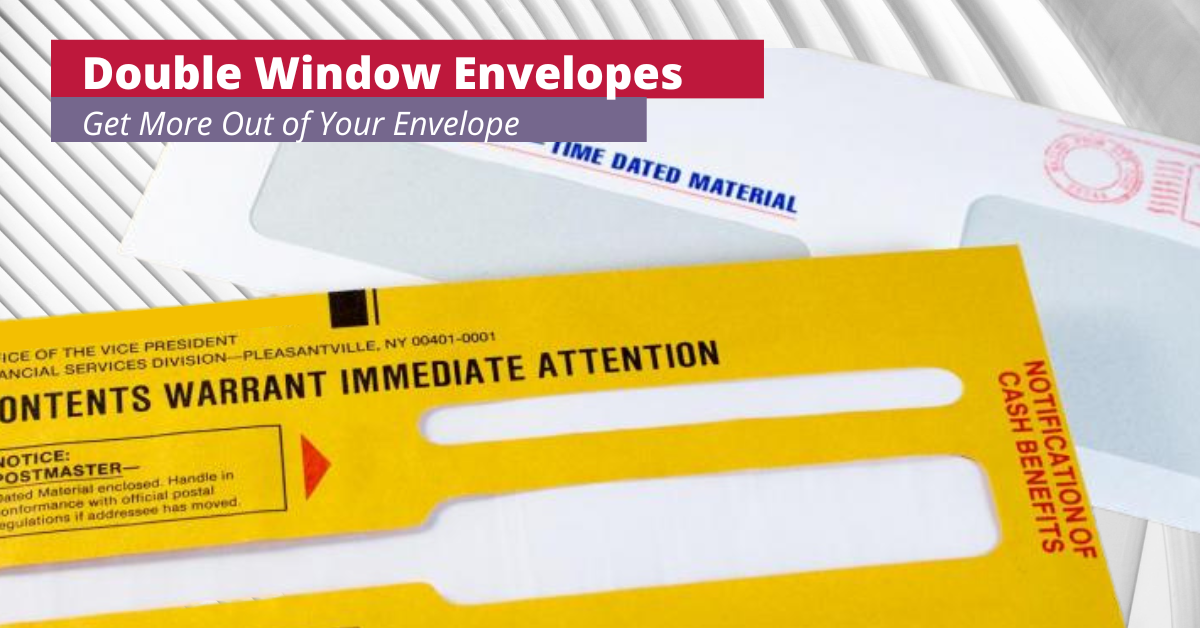Versatile and popular, double window envelopes are a staple for billing, statement and tax envelope mailings. A double window envelope, as implied by the name, has two windows—frequently one for the return address and one for the mailing address on the face of the envelope.
Double Window Envelope Uses
Double window envelopes can come in nearly any size, and are often found on #10, #9, 6×9 and 9x12s. In addition to the common uses mentioned above for financial mailings, the double windows can have creative uses in direct mail envelopes as well. Even Courtesy Reply Mail envelopes or Business Reply Mail envelopes can feature double windows.
Double Windows Are Often Found on These Envelopes
What Kinds of Double Windows Are There?
The two windows on a double window envelope can take many forms.
Stacked Window

A stacked double window envelope features two windows that are aligned on the left. It is the most simple and common of the designs, and often these envelopes are used for billing and statement mailings as they easily allow for the mailing address on the bottom and a return address on top. For direct mail, they may feature the mailing address at the bottom and teaser copy above.
Side-by-Side
Two windows that are next to each other while aligned at the top or bottom of the windows are called side-by-side double window envelopes. These are often found in direct mail. The left window may show the address and the right would show teaser copy.
Offset Windows

When the windows are not aligned either horizontally or vertically they are referred to as “offset.” The placement of the mailing address and the return address using offset windows most resembles typical printed address envelopes where the addresses are not aligned.
“Front” and “Back” Windows, or “Non-Seal Flap Side” and “Seal Flap Side”
It’s tempting to say front and back of the envelope, but whichever side of the envelope has the address and indicia is considered the “face” of the envelope by the USPS®.
With that in mind, sometimes we see our direct marketing clients using double windows quite creatively, with one window on the flap side and the second window on the reverse side, or non-flap side. One window can be for the address. This would be on the “face” of the envelope and would be on the same side as the indicia. The other window, on the opposite side, can let a colorful marketing message show through.
Single or Double Window Patches on Double Window Envelopes
Does a double window mean a double window patch? Not necessarily. A patch, in reference to windows, means an approved window covering. More literally, it is a patch of window film that covers the envelope’s window. Some single window envelopes are “open panel” or “open face,” meaning they do not have a window covering or patch, but Tension does not produce any open panel, double window envelopes. When talking to an envelope expert at Tension, we would talk about the number of windows and then the number of window patches.
Single Patch
A single patch uses one piece of material to cover both windows. A single patch is used when the distance between two windows does not allow for a double patch, or the machine that manufactures the envelope can only do single patches. Single patch double windows typically use more window film.
Double Patch
Double patch window envelopes have a separate piece of window film covering each window. They often use less material than a single patch. Simple changes in window size and placement can often allow for double patch window envelopes.
Double Window Placement Requirements
Windows must always comply with USPS addressing guidelines and cannot interfere with clear zones. For inserting and manufacturing purposes, your bottom windows should be placed at least 1/2″ from the side and the bottom of the face of the envelope to ensure adequate room for patch adhesive. Generally, standard placement is 7/8″ from the left and 1/2″ or 5/8″ from the bottom of the envelope’s face.
For stacked windows, the second, or upper, window should also be at least 1/2″ from the top and 7/8” from the left of the face of the envelope. We recommend a minimum of 3/8” between the windows. For side-by-side windows, we recommend 3/4″ between the windows.
Contact Tension
A Tension envelope expert can help you explore how to maximize the windows on your envelope. Contact us to start the conversation today.




